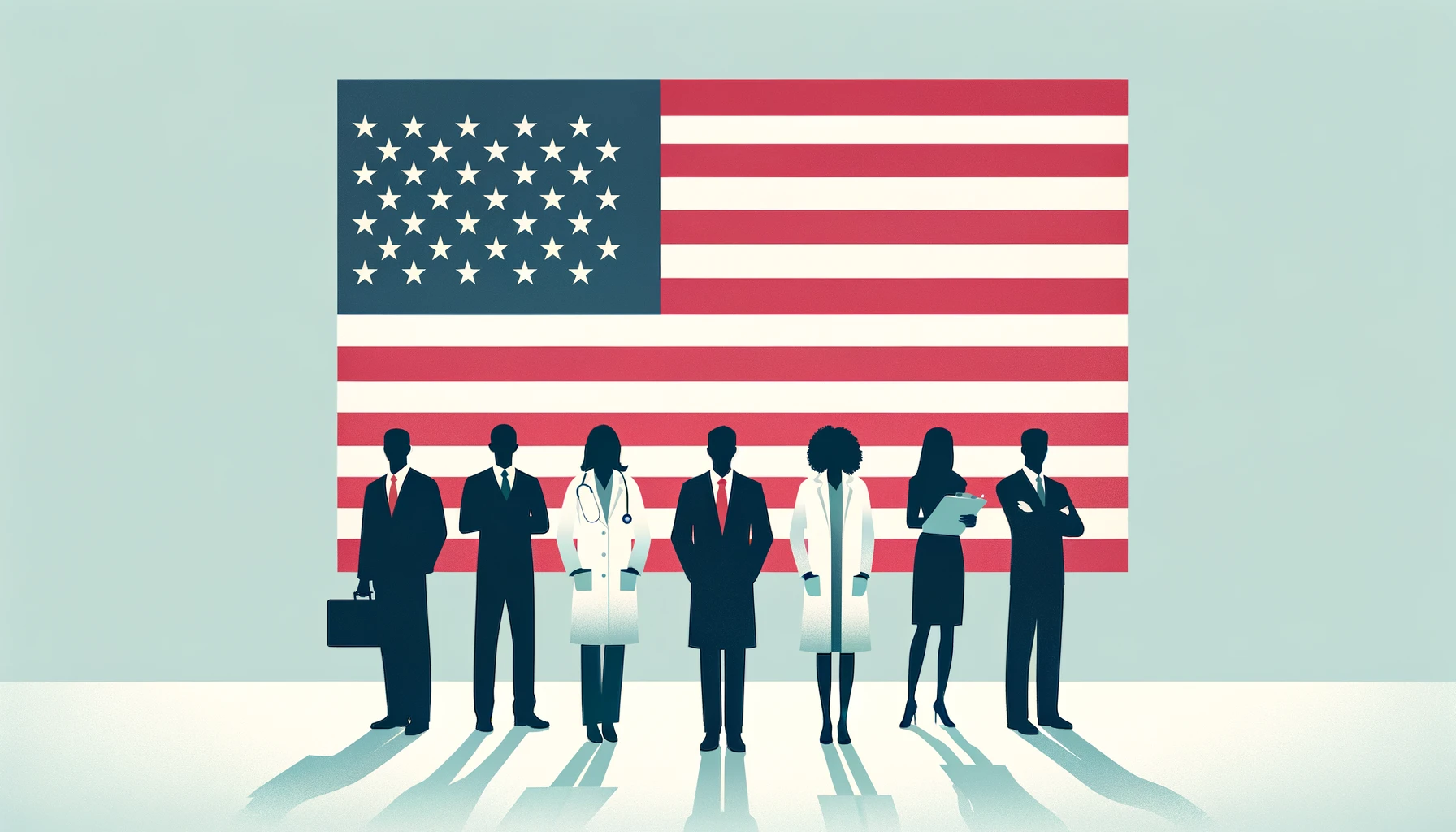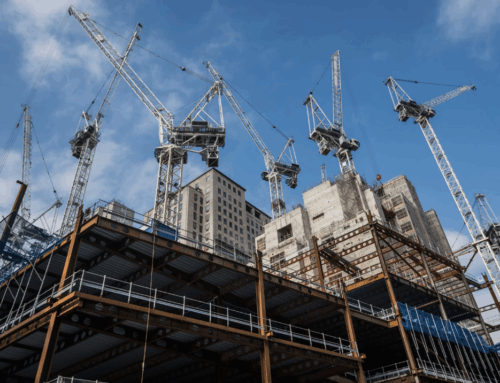By John Lettieri and Connor O’Brien
Executive Summary
Three-quarters of American voters support increasing high-skilled immigration (HSI), with widespread approval across the entire political spectrum and in every presidential swing state. That’s according to a new national survey for the Economic Innovation Group, conducted by Echelon Insights. Voters’ desire to welcome more foreign-born, highly skilled talent into the American workforce is unaffected by their pressing concerns about border security and the health of the legal immigration system, or by their pessimistic views about the U.S. economy.
Immigration remains one of the most contentious topics in American politics, but voters are in sweeping agreement about the benefits of high-skilled immigration specifically.
Other key survey findings include:
- Support for HSI is overwhelmingly bipartisan: 71 percent of voters who plan to support President Trump in November and 86 percent of those who plan to vote for President Biden favor increasing HSI.
- More than two-thirds of voters in every swing state (Arizona, Georgia, Michigan, Nevada, North Carolina, Pennsylvania, and Wisconsin) support increasing HSI.
- Two-thirds of voters rate economic conditions throughout the United States as “poor” or “not so good.” Despite Americans’ economic frustrations, voters have not turned inwards; they want the country to remain open to high-skilled foreign-born talent.
- Most Americans do not believe the U.S. immigration system is designed to benefit them. Only 37 percent agreed that “the U.S. immigration system is currently designed to benefit the U.S. economy, its workers, and its communities.”
- Sixty percent of voters overall and 89 percent of GOP voters agree with Donald Trump’s call for a “big, beautiful door”—pairing tough border policies with a welcoming legal immigration system for those who can contribute to our economy.
- Four-fifths of voters believe the American immigration system needs “major changes” or “a complete overhaul.”
- Concerns about the Southern border and illegal immigration unite voters across every tier of income and education level; across white-collar, blue-collar, and service workers; and across racial and ethnic groups.
- Voters overwhelmingly see the economic and competitive advantages of HSI; 70 percent say it benefits the U.S. economy.
- The voters least likely to compete with high-skilled immigrants—rural Americans with a high-school degree or less—are nonetheless those most likely to oppose more HSI.
By wide margins, voters support increasing high-skilled immigration.
Seventy-four percent of voters support “allowing more legal, high-skilled immigration to the United States,” versus only 18 percent who oppose it.
When prompted with a simple definition of high-skilled immigration, support rises to 78 percent and opposition falls to 16 percent.
The survey asked a series of questions designed to assess how voters view HSI from a variety of vantage points—questions about whether voters believe HSI should be a priority for lawmakers, what kinds of effects they believe it has on the U.S. economy, and whether they are in favor of expanding the number of high-skilled immigrants overall. In their responses, voters expressed overwhelming and consistent support for more HSI.
National support extends across the seven key presidential swing states. In each one, voters start off strongly in favor of expanding HSI and become even more supportive once the term is defined, with support rising as high as 82 percent in Arizona and 83 percent in Nevada.
Support for increasing HSI extends across the ideological spectrum. Eighty-six percent of likely Biden voters and 87 percent of self-identified liberals support allowing more HSI. Seventy-three percent of self-described conservatives support more HSI, along with 71 percent of respondents who plan to vote for President Donald Trump in November.
Messaging explicitly linked to former President Trump’s famous call for a “big, beautiful door”—pairing tough border policies with a welcoming legal immigration system for those who can contribute to our economy—was also rated positively by a wide majority of voters. Sixty percent said this statement “almost perfectly matches” or is “pretty close” to their views. This group included an 89 percent share of GOP voters and, notably, 58 percent of independents. Only 33 percent disagreed.
Support for high-skilled immigration is resilient to pessimistic views on the U.S. economy, the border crisis, and the overall immigration system.
Americans expressed deeply negative sentiments about the American economy, concerns about the border crisis, and the perception that the overall immigration system isn’t working. But rather than causing Americans to turn inwards and reject foreign-born talent, none of these concerns has dented support for increasing high-skilled immigration.
Economic pessimism
Sixty-seven percent of voters rate economic conditions in the United States as “not so good” or “poor.”
Only a quarter of voters say conditions are “good” and a vanishingly small share—6 percent—rate the economy as “excellent.” Economic sentiment among swing state voters tracks closely with the negative national mood.
When voters were asked about economic conditions for them personally and in their local communities, their responses were slightly more positive. In contrast to the 31 percent of voters who rated the national economy as “good” or “excellent,” the share rises to 40 percent when asked about their personal and local economic conditions.
Similarly, the share of voters saying conditions are “not so good” or “poor” drops from 67 percent nationally to 58 percent for local conditions and 59 percent for voters’ personal economic conditions.
The border
Voters express major concerns over border security and illegal immigration. Eighty-four percent say that action to secure the southern border and reduce illegal immigration should be a “top” or “important” priority for Congress over the next 12 months, while merely 3 percent say it “should not be done.”
Voter sentiment is remarkably consistent across every tier of income and education level; across white-collar, blue-collar, and service workers; and across racial and ethnic groups.
Intensity is highest among GOP voters, of whom 77 percent say border security should be a “top priority,” joined by 48 percent of independents and 39 percent of Democrats.
When asked whether they would support more HSI if the southern border were fully secure, voters’ support remains unchanged: 76 percent strongly or somewhat support, while 16 percent are strongly or somewhat opposed. This result suggests that voters see fixing the legal immigration system and ending the border crisis as parallel—rather than contingent—priorities. Solving one problem should not depend on solving the other.
The immigration system
Support for increasing high-skilled immigration is also resilient to Americans’ poor views about the overall U.S. immigration system.
Eighty percent of voters say the immigration system either needs “a complete overhaul” or “major changes,” compared with 16 percent who say it needs no changes or only minor changes.
Only 37 percent agreed with a statement that “the U.S. immigration system is currently designed to benefit the U.S. economy, its workers, and its communities.” Fifty-two percent somewhat or strongly disagreed.
Swing state voters view the current immigration system even more negatively. Voters in every swing state expressed higher levels of disapproval in how the current system is designed than voters overall, reaching as high as 63 percent in Nevada, 64 percent in Arizona, and 65 percent in Pennsylvania.
Among those who voted for Trump in 2020, only 26 percent expressed confidence in the design of the current system, while 68 percent disagreed. Biden voters were more positive but still tepid: 48 percent strongly or somewhat believe the current system is designed to benefit the American economy, workers, and families, while 39 percent disagreed.
Unsurprisingly, voters are looking for action to address flaws in our legal immigration system. Seventy-seven percent of voters say “improving our legal immigration system to prioritize highly-skilled workers” should be an important priority for Congress over the next 12 months, including 35 percent who say it should be a top priority.
When “setting aside the issues of border security and illegal immigration,” 64 percent of voters said the legal immigration system needs either a complete overhaul or major changes, while only 31 percent said the legal system needs no changes or only minor changes.
Voters see the economic and competitive benefits of increasing high-skilled immigration.
The resilience of support for high-skilled immigration likely stems from voters’ positive views about its economic contributions.
Seventy percent see the national economic effects of high-skilled immigration as either very or somewhat positive, compared with just 18 percent who see them as very or somewhat negative.
When asked about all forms of legal immigration—including family-based and humanitarian categories—the share of voters who believe its economic effects are positive falls to 54 percent, while 18 percent believe it is negative.
As for illegal immigration, only 11 percent of voters believe its effects on the economy are positive, while 61 percent believe they are very or somewhat negative.
The survey then asked voters to respond to four potential justifications for increasing HSI. All four received far-reaching support.
First, voters comprehensively agreed—84 percent to 11 percent—that openness to the best entrepreneurs, innovators, and investors from around the world improves Americans’ standard of living.
Similarly, voters affirmed—79 percent to 14 percent—that welcoming the world’s top scientists, engineers, and doctors is important for strategic competition with nations like China.
Importantly, by a 64-point margin, voters believe concerns over border security or illegal immigration should not stand in the way of improving the system to make it easier to recruit those who can contribute to our economy.
And a large majority of voters said that American businesses are more competitive in global markets when they can recruit both the best native-born talent and skilled workers from across the world. Indeed, recent EIG research finds that foreign-born talent is a crucial driver of innovation in industries key to economic and national security.
A consistent finding in the survey is that many voters perceive the benefits and disadvantages of immigration in the abstract.
Although 70 percent of voters believe that high-skilled immigration has positive effects on the national economy, for example, the share drops to 44 percent who believe it has positive effects for them personally and 59 percent who believe it benefits their local community. The share of negative responses remained low and flat, as more voters simply believe that high-skilled immigration had no real effect on them and their surroundings.
A similar trend, though going in the other direction, applied to the negative beliefs about illegal immigration. A higher share of voters believe that illegal immigration is bad for the national economy than the share who believe that it is bad for them or their communities. Only 46 percent said that illegal immigration has a “very negative” or “somewhat negative” effect on them personally, compared to the 61 percent who said so about the U.S. economy.
Voters expressed greater clarity regarding the local benefits of HSI when asked to respond to specific potential effects. The survey tested five distinct ways that HSI might affect local economies, from spurring innovation to starting new businesses and reinvigorating declining areas. Across all five, voters saw the likely effects as profoundly positive.
Respondents were most positive about the potential for HSI to help the U.S. maintain its scientific and technological edge and to increase the number of doctors and nurses in their local communities.
Who opposes allowing more high-skilled immigration and why?
Opposition to expanding high-skilled immigration is much smaller than support for it, but the survey yielded interesting and counterintuitive results about this minority of voters.
The voters most likely to oppose HSI were those least likely to compete with high-skilled immigrants: voters with a high school degree or less. Twenty-three percent of them oppose more HSI, compared with just 13 percent of voters with a college degree.
Twenty-four percent of respondents who initially opposed expanding HSI flipped after being presented with a definition, suggesting that some of the existing opposition is the result of not understanding it.
Unsurprisingly, opponents of expanding HSI are more pessimistic about the economy than voters overall, with 78 percent ranking it as either “not so good” or “poor.”
Opposition to HSI also appears to be symptomatic of a broader opposition to immigration in general, rather than specific concerns about HSI itself.
Voters who oppose HSI are more likely than voters overall to think the immigration system needs extensive changes (89 percent versus 80 percent). Opponents are also less likely to believe the current system is designed to benefit the U.S. economy and native workers (28 percent versus 37 percent).
Two of the top three reasons voters give for opposing HSI relate to job competition, with 55 percent citing “increased competition for limited job opportunities” for U.S. workers in general, and 39 percent citing “increased competition for my own job opportunities.” National security concerns were the number two reason at 44 percent.
Finally, the survey found that the political salience of high-skilled immigration was weak among voters who oppose it. Voters were presented two different hypothetical candidates, both of whom support border security but who differ on support for high-skilled, legal immigration. Respondents narrowly favored the pro-HSI candidate, 49 percent to 46 percent. Notably, both voters who favor increasing HSI and voters who oppose it narrowly support the pro-HSI candidate—suggesting that support for HSI is not a risky position even for candidates whose constituents lean against it.
Conclusion
Research conclusively demonstrates that high-skilled immigration strengthens the U.S. economy. While most voters aren’t immersed in the empirical literature, this survey makes it clear that they intuitively understand the case for expanding high-skilled immigration.
A few other conclusions about American voters and immigration policy stood out from the survey results:
- Voters across the political spectrum embrace the idea that attracting the best and brightest from around the world is squarely in the best interest of the United States.
- Voters understand that “immigration policy” is not monolithic. They are able to separate high-skilled immigration from their concerns over border security and their disdain for the failings of the broader immigration system. Furthermore, high-skilled immigration policy carries negligible political risk—even among the small minority of voters who are generally opposed to it.
- People are really angry about the border. Voters across the ideological and partisan spectrums are unified in their concern over border security and illegal immigration. But that’s not all—voters see a broader failure with the immigration system, a perception that it is not designed at its core to deliver benefits to Americans and their communities. These results cry out for a more explicitly self-interested rationale for immigration policy.
Perhaps the most important takeaway is this: A bipartisan path forward is possible. Despite our country’s toxic immigration debate, high-skilled immigration remains durably popular with all types of voters. Lawmakers should embrace the opening.
Survey Details:
This poll was conducted by Echelon Insights on behalf of the Economic Innovation Group. It surveyed 2,036 registered voters nationwide plus oversamples of voters in swing states including Arizona, Georgia, Michigan, North Carolina, Nevada, Pennsylvania, and Wisconsin, had a margin of error of +/- 2.1 percentage points, and was conducted in April 2024. Explore the topline survey results and methodology here.






